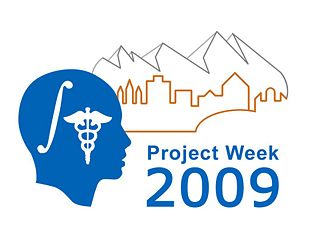Two-tensor tractography in Slicer using Python and Teem
 Return to Project Week Main Page |
Key Investigators
- BWH: Madeleine Seeland
- BWH: Carl-Fredrik Westin
- BWH: Gordon Kindlmann
- BWH: Nobuhiko Hata
Objective
Our objective is to finalize the integration of the Two-Tensor Streamline Tractography method in [1] into Slicer and to test it on diverse DWI datasets. Furthermore the optimal parameter settings to run the algorithm needs to be investigated.
Approach, Plan
We are integrating the Two-Tensor Streamline Tractography into Slicer. The complete details on the method are summarized in [1].
The implementation of our project is carried out in Python. The Two-Tensor Tractography function calls are already implemented in the Teem library and can be accessed using the Python wrappings for Teem.
Before integrating the Two-Tensor Tractography algorithm into Slicer, the optimal parameter settings for the algorithm needs to be investigated.
Furthermore we need to find a way to parallelize the tractography algorithm.
Another plan is to apply a noise filter on the DWI's before applying the Two-Tensor Tractography algorithm, as this may lead to more accurate fiber results.
Further, we want to extend the Two-Tensor Tractography module by fiudical seeding.
Progress
- The implementation of the Two-Tensor Tractography is already finished. Currently I'm testing the algorithm with different parameter settings.
- Extension of the Two-Tensor Tractography module by fiudical seeding. The aim behind it is to use a tracking device to seed the tractography.
- Working with Marco Ruiz on getting my module working with GWE (Grid Wizard Enterprise) ([1]) in order to parallelize the execution of my algorithm. Thanks to Luca Antiga, who is working on getting Python modules run as command line modules so they can be executed by GWE.
References
- [1] Qazi AA, Radmanesh A, O'Donnell L, Kindlmann G, Peled S, Whalen S, Westin CF, Golby AJ. Resolving crossings in the corticospinal tract by two-tensor streamline tractography: method and clinical assessment using fMRI. Neuroimage 2008
- [2] Peled S, Friman O, Jolesz F, Westin CF. Geometrically constrained two-tensor model for crossing tracts in DWI. Magnetic Resonance Imaging 2006;24:1263-1270.